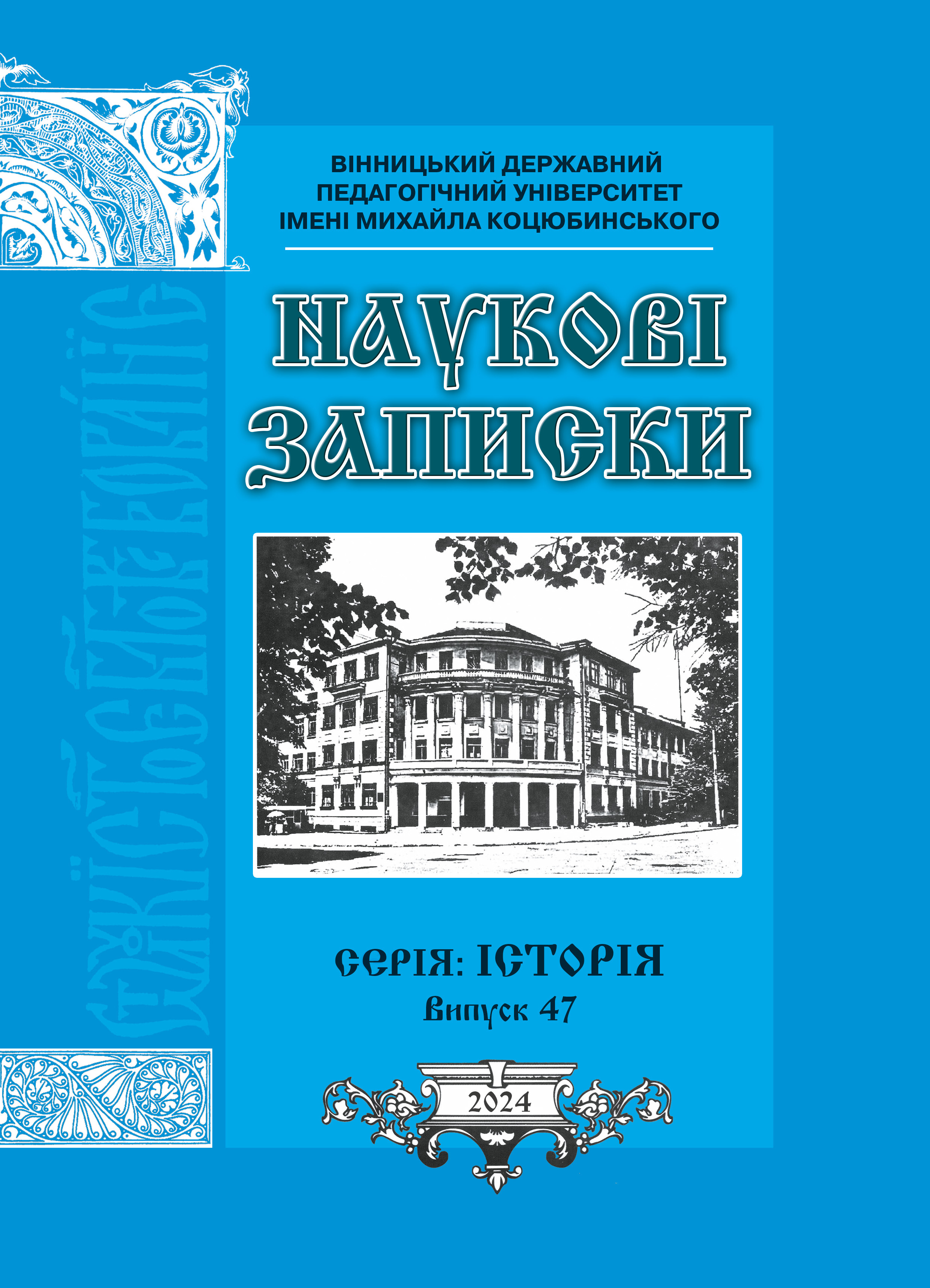Abstract
The purpose of the article is to characterize the process of formation and the first steps of the Peasant Land Bank (Selianskyi pozemelnyi bank), to identify and analyze various projects of the organization of a state institution for long-term crediting of the peasantry, which preceded the emergence of the Peasant Land Bank in 1882. Research methodology is based on the fundamental principles of historical research: historicism, systematicity, objectivity in the selection of facts and documents. Scientific novelty of the article lies in the analysis of projects for the formation of the Peasant Land Bank in the Russian Empire in the context of agrarian reforms of the late 19th and early 20th centuries. Organizational and legal aspects and principles of functioning of this bank, its role in the implementation of the government's agrarian policy are studied. The author examines the influence of credit activity of the Peasant Land Bank on the development of agriculture and formation of a class of wealthy peasants in the context of the modernization of agriculture. Conclusions. The establishment of the Peasant Bank, to a certain extent, can be considered as an important step in the direction of public opinion at that time. The concession, which over time was tried to be significantly reduced, was the establishment of numerous restrictions, which indicated the limited effectiveness of the bank's activities. These restrictions included a five million annual transaction limit, a small maximum loan size per person, and the ability to participate in transactions only by voluntary agreement between the seller and the buyer. It was also assumed the need for significant additional payments when purchasing, which were unaffordable for poorer peasants. These restrictions significantly limited the positive influence of the bank. It was noted that the main goal of the bank was realized in a residual way, in particular, due to political reasons and commercial principles that were the basis of its activity. In addition, crediting conditions were considered absurd, as they provided for the same interest rates as in commercial banks. A prospective promise was a change in the focus of the bank's activity to credit support for peasants who intended to farm on the acquired lands, in particular by providing “ameliorative” credit.
References
Батуринский, Д. А. (1925). Аграрная политика правительства и Крестьянский поземельный банк. М. : Новая деревня. 145 с.
Высочайше утвердженное Положение о Крестьянском Поземельном Банке (1886). Полное собрание законов Российской империи. Собр. ІІІ. Т. 2. СПб. № 894. С. 218–221.
Высочайше утвержденный Устав Крестьянского поземельного банка (1895). Полное собрание законов Российской империи. Собр. 3-е. Т. ХV. СПб. № 12195.
Зак, А. Н. (1911). Крестьянский поземельный банк (1883 – 1910 рр.). М.. 607 с.
Земство. (1881). № 33. С. 2.
Проскурякова, Н. А. (2002). Земельные банки Российской империи. М. 520 с.
Селіхов, Д. А. (2019). Сільськогосподарський кредит на українських землях Російської імперії у 1861 – 1917 рр.: історико-правове дослідження : монограф. Дніпро : Дніпроп. держ. ун-т внутр. справ. 296 с.
Ходский, Л. В. (1880). Воззрения земств по вопросу о расширении крестьянского землевладения. СПб. : Тип. М. Стасюлевича. 353 с.
Ходский, Л. В. (1882). Поземельный кредит в России и отношение его к крестьянскому землевладению. М. : типо-лит. И.Н. Кушнерева и К°. 295 с.

This work is licensed under a Creative Commons Attribution 4.0 International License.
Copyright (c) 2024 Viktoriia Nykytenko





